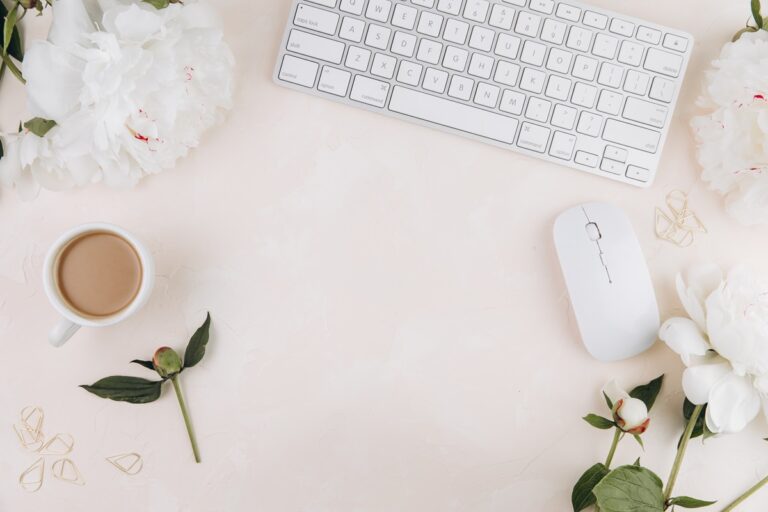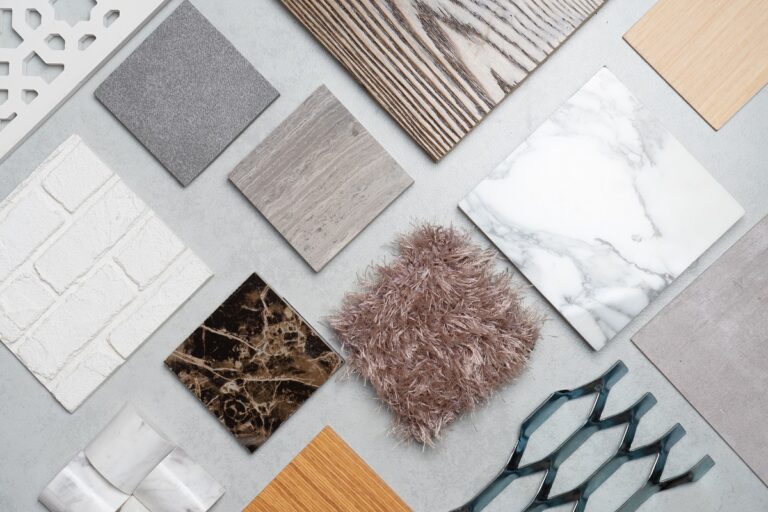Installation day is when all the planning, sourcing, and styling come together to create a beautifully finished space. A smooth process keeps stress levels low and allows the design to shine.
From coordinating deliveries to adding the final touches, every detail matters. Clear communication with vendors, trades, and team members ensures everything stays on track. A well-prepared install kit saves time and solves last-minute hiccups. Thoughtful styling and a polished reveal leave clients feeling thrilled with their transformed space.
With the right plan in place, installation day feels effortless, and the end result is nothing short of stunning. To handle this important day successfully, keep reading for our top tips and thorough checklist.
Table of Contents
What happens during installation day?
Installation day is when the design vision turns into reality. Furniture arrives, artwork is hung, and every detail falls into place. A team of movers, stylists, and tradespeople work together to bring the space to life. Unpacking, arranging, and styling take center stage while any last-minute adjustments are handled. The final steps include cleaning, perfecting the layout, and adding finishing touches that make the space feel complete.
How to make installation day a success
A seamless installation day is the key to bringing your design vision to life without unnecessary stress. Proper planning, organization, and clear communication ensure everything runs smoothly from start to finish.
Here are 5 essential tips for installation day:
- Create a detailed timeline and assign tasks – Outline the day’s schedule, allocate tasks to team members, and build in buffer time for unexpected delays.
- Confirm all deliveries and inspect items beforehand – Double-check that all furniture, décor, and materials have arrived in good condition before installation day to avoid last-minute surprises.
- Prepare an installation day essentials kit – Bring a well-stocked kit with tools, cleaning supplies, and styling accessories to handle any on-the-spot adjustments.
- Have a designated project lead on-site – Assign one person to oversee the installation, manage communication, and troubleshoot issues as they arise.
- Plan for a smooth client reveal – Ensure the space is spotless, style finishing touches with care, and capture professional-quality photos before the final walkthrough.
The ultimate installation day checklist
A well-planned installation day keeps everything running smoothly from start to finish. This ultimate checklist covers every detail, from scheduling deliveries to adding the final styling touches.
Download Our
Free Installation Day Checklist
- Skip the chaos: No missing tools or mystery timelines
- Know what’s packed, who’s arriving, and when
- Style the space and wow the client
- Check off every detail with calm confidence

Where interior designers
come to get organized
Schedule the installation day and get help
Well before the date arrives, take care of these important scheduling tasks.
- Schedule installation date with all necessary partners
- Confirm availability of warehouse for delivery preparation
- Coordinate with builder or trades to finalize work before installation
- Arrange for a cleaner to complete final cleaning prior to installation
- Request clients to vacate the space during installation
- Book a truck, van, or moving service for transport
- Schedule stylists or installation team members
- Hire a photographer to capture the final setup
- Secure a handyman for picture hanging or shelf installation
- Arrange a fine art installer for valuable artwork
- Coordinate window treatment installation if needed
- Confirm all staff and assistants are available for the day
- Recruit extra help from friends, family, or paid assistants if needed
- Get access information regarding parking, stair use, loading dock, or elevators
- Relay any client instructions about site access to installers
Organize pre-installation logistics
Make sure to organize all moving parts ahead of time.
- Coordinate deliveries and confirm schedules with vendors, movers, and tradespeople
- Ensure all construction or repairs are complete before installation day
- Track inventory and materials using a spreadsheet or project management tool like DesignFiles
- Order and prepare to bring all of your styling accessories
- Organize styling items in labeled, room-specific boxes
- Wash linen, crockery, and other household items (if included)
- Order flowers for delivery or pick-up
- Purchase and prepare client gifts
- Print floor plans and attach them to doors for easy furniture placement
- Confirm cleaning services are completed before installation
- Arrange on-site help, including movers, stylists, and any required trades
- Verify all necessary tools and supplies are packed
- Communicate installation timeline and expectations with clients and team members
Prepare and bring an installation day kit
Here’s a comprehensive list of items to consider adding to your kit:
Tools:
- Iron/steamer
- Scissors
- Hammer
- Battery-operated screwdriver (with spare batteries)
- 3M wall hooks
- Painter’s tape
- Stud finder
- Laser measure
- Tape measure
- Level
- Zip ties
- Felt furniture pads
- Batteries
- Power boards
- Extension cords
- Plastic drop cloths
- Nails/screws/tool set
- Command Velcro strips
- Command Claw hooks
- Rubber bands
- Tripod
- Furniture sliders
- Hand truck
- Collapsible wagon
- Ladder/step ladder
- Rug tape
- Light bulbs
- Spackle
- Touch-up paint and brush / Touch-up pen kit
Cleaning supplies:
- Hand vacuum
- Mop/floor cloth
- Disposable wipes
- Hand soap
- Hand towel
- Paper towel
- Disposable gloves
- Cleaning products (including glass cleaner)
- Lint roller
- Garbage bags
- Goo remover
- Magic eraser
Personal items:
- Phone charger
- Speaker
- Snacks/drinks
- Water bottle
- First aid kit
- Walkie-talkies
- Comfortable shoes
- Change of clothes
- Canvas bag for carrying small items
- Petty cash for tipping installers or purchasing items on the fly
Plan the day’s schedule and assignments
Next up, create a detailed plan for the entire day.
- Create a timeline for the installation process
- Schedule breaks for meals and rest periods
- Allocate time for troubleshooting or unexpected delays
- Decide whether the installation will take one or multiple days
- Plan a realistic end time to avoid burnout
- Track time during the install to improve future scheduling
- Assign specific tasks or rooms to team members
- Book accommodations for clients if the install spans multiple days
- Communicate the schedule and assignments to the entire team using a task management platform like DesignFiles
Coordinate on-site setup
Make sure to coordinate every aspect of the on-site setup process.
- Designate a project manager to oversee the setup
- Pack rugs last to unload and place them first
- Greet clients and guide them out for the day
- Post floor plans on doors for easy furniture placement
- Set up installation kits, snacks, and music
- Assign specific tasks or rooms to team members
- Unload the truck and place items according to floor plans
- Use labeled styling boxes for efficient unpacking
- Capture photos and videos for social media and project documentation
Inspect and address any defects or missing items
Before and during installation day, inspect all products.
- Start a defect list during the setup
- Track missing or damaged items and set timelines for fixes
- Communicate defects with vendors or trades for resolution
- Replace or reorder damaged products as needed
- Verify that repairs or replacements align with the original design
- Document defects for client transparency and follow-up
- Provide an estimated timeline to clients for outstanding issues
(Some designers track punch list items and defects directly in their design software, allowing them to update clients and vendors in real-time. DesignFiles users, for example, can log item statuses, vendor notes, and defect timelines all in one place.)
Clean the space during and after installation
Make sure to take care of all of these cleaning tasks:
- Clear packaging, debris, and rubbish as you go
- Wipe down furniture, surfaces, and décor items
- Use a handheld vacuum to spot clean floors and rugs
- Gather and sort recycling and non-recyclable waste
- Clean mirrors, glass, and windows with appropriate products
- Perform a final sweep or mop of floors before the walkthrough
- Pack away tools and supplies neatly after use
Execute styling and finishing touches
Put the finishing touches on the space to make the transformation complete.
- Add final touches like flowers, candles, or throw pillows
- Arrange decorative accessories according to the design plan
- Plug in electronics and hide visible cords with zip ties
- Check all furniture placement and make minor adjustments
- Remove tags and stickers from all decorative items
- Style bookshelves, coffee tables, and countertops
- Take more photos and videos for social media
- Document the completed design for client reference
Prepare for client handover and walkthrough
Get ready to walk your client through the space and handover all necessary information.
- Conduct a final walkthrough or handover with clients upon their return
- Present the handover folder to clients
- Walk through how everything functions, such as lamps and appliances
- Review the defect list and discuss your plan for resolving issues
- Demonstrate how to style key elements, swap out seasonal pillows, etc.
- Share any hidden storage components or tidying tips
- Capture final photos for social media and documentation
Frequently asked questions about interior design installation
The timeline for an interior design installation depends on the project size and complexity. A single-room install may take a few hours, while a full home can span multiple days. Careful planning, organized deliveries, and a skilled team help streamline the process and keep everything running smoothly from start to finish.
Clients can prepare by clearing the space, confirming access details, and removing personal items. If possible, they should plan to be away during the install. Trusting the process allows the design team to work efficiently and create a beautiful, stress-free reveal.
Designers need to stay calm and flexible when items arrive damaged or go missing. They usually document issues, contact vendors for replacements, and find quick styling solutions to keep the space looking polished. A well-prepared install kit helps with small fixes, while clear communication with clients ensures they feel confident in the plan to resolve any issues.
The designer typically oversees deliveries and on-site setup, working closely with vendors, movers, and trades. A project manager or lead designer ensures everything arrives on time, is placed correctly, and any last-minute adjustments are handled smoothly for a flawless installation.
Last-minute changes are part of the process, and designers are ready to adapt. Whether adjusting furniture placement or swapping accessories, quick thinking keeps the design on track. Clear communication with clients and a creative approach help ensure the space looks polished and feels just right.
Install day is smoother when everything’s planned, tracked, and styled to perfection. Want a platform that helps with all three? DesignFiles makes it easier to execute every detail.


